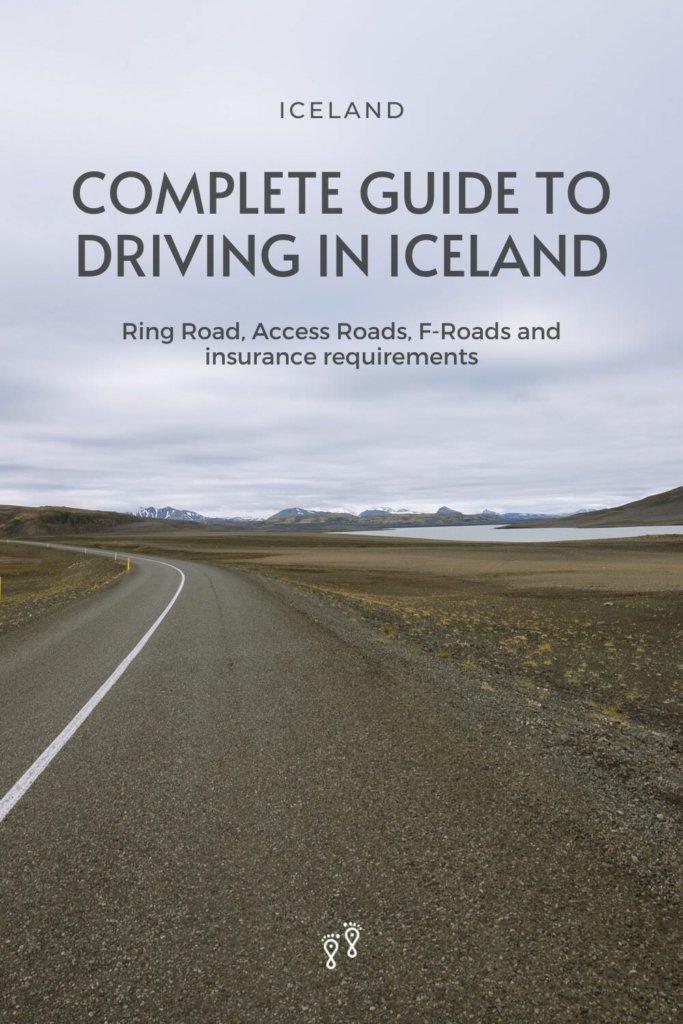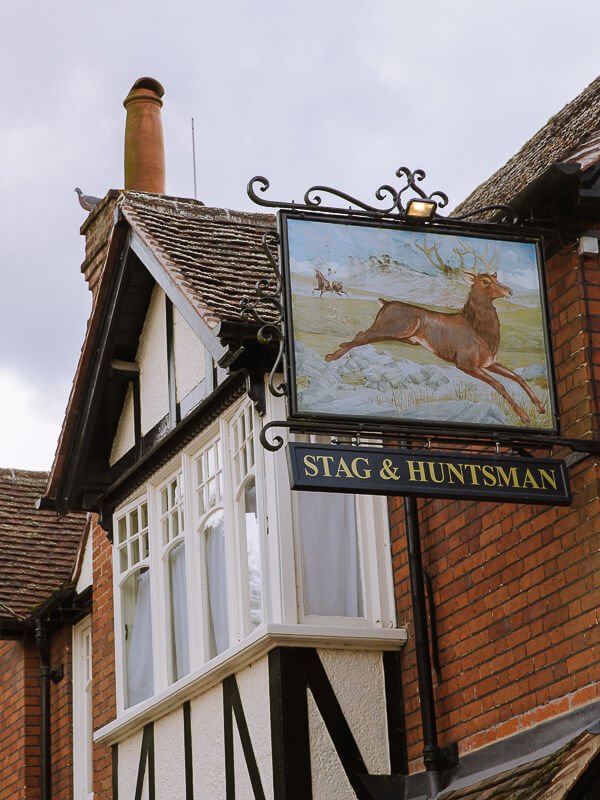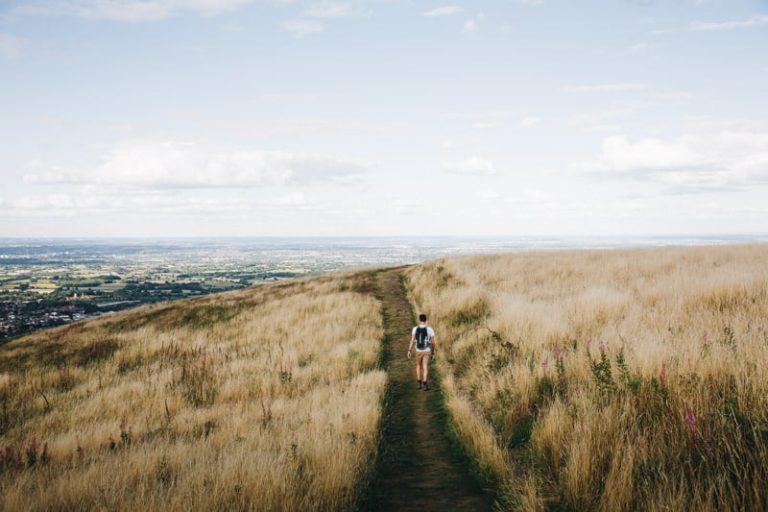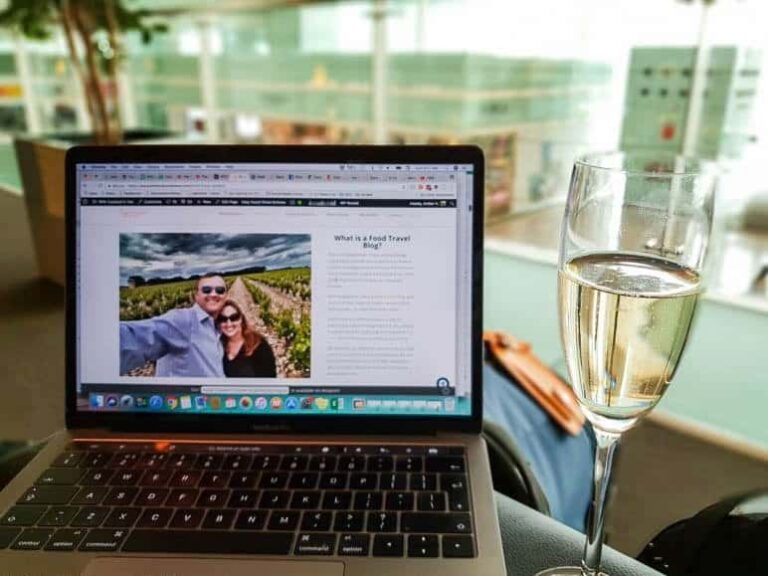Driving in Iceland allows you to see the best of this stunning country with the freedom to go at your own pace. Here are some important things you need to know before your road trip.
Iceland is a volcanic wonderland filled with dramatic landscapes.
While the area surrounding Reykjavik has some great attractions, the only way to see some of the most spectacular, most unique and weirdest geology in Iceland is to drive yourself.
While much of the driving in Iceland is straightforward, there are several challenges that you need to plan ahead for. Weather conditions can be extreme and changeable, road quality is varied, and insurance policies can be confusing.
Furthermore, the type of car you decide to hire and your own level of adventurousness will determine where you can go and how much you can see.
We saw a lot of this amazing country on our 10-day Iceland Itinerary, much of which would not be possible without the right car rental.
Read on for all our tips to help you travel independently and experience the best of Iceland.
Booking your trip via the links on this page (or on our book page) will earn us a small commission, at no extra cost to you. Thanks for your support – Paul & Mark.

SHOULD YOU DRIVE IN ICELAND?
Yes. Iceland is a stunningly beautiful country with unusual sights dotted all around the island that you won’t see anywhere else. While there’s no shortage of tours from Reykjavik to the Golden Circle and other popular destinations, many of the most unique parts of Iceland are difficult and time-consuming to see via public transport.
A car rental in Iceland, allows you to go where you want when you want and saves you time so you can make the most of your holiday. It not only enables you to see the best of the popular Ring Road, but also to head to breath-taking natural scenery in the remote highlands.
Self-driving in Iceland is the best way to see the country independently with a healthy dose of achievable adventure.
DO I NEED AN INTERNATIONAL DRIVING LICENCE?
An international driving licence is not required in Iceland, providing you have a valid driving licence from your home country with a licence number, photograph and valid date. The licence needs to be in Latin letters.
All US driving licences, UK and EU licences are considered valid in Iceland, however you must have held the licence for at least 1 year.
Drivers must be 20 years of age to rent a car in Iceland and 23 years old to rent a 4-wheel drive.
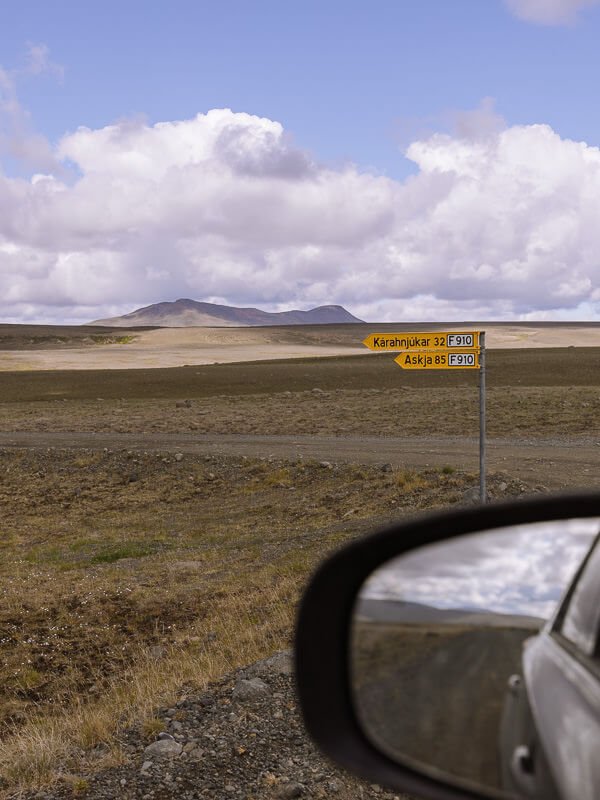
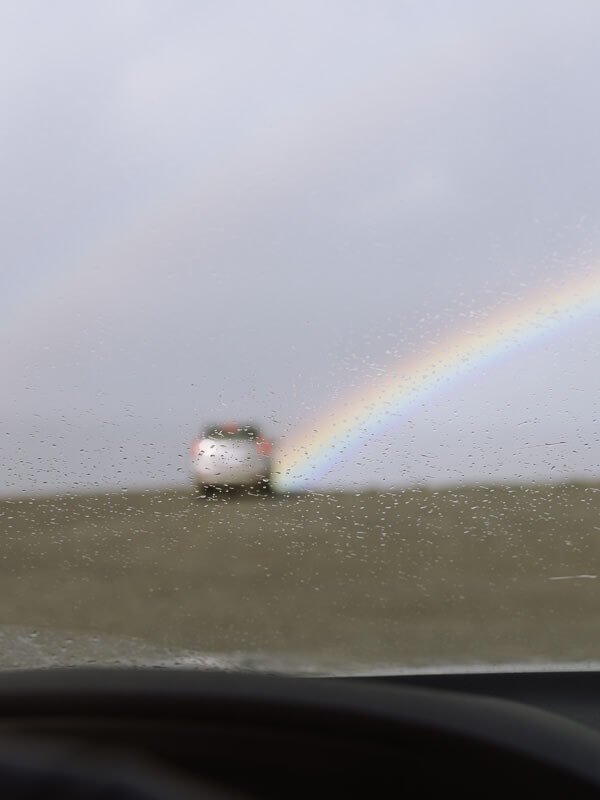
WHAT ARE THE ROADS LIKE IN ICELAND?
There are 3 main types of roads in Iceland
Paved Roads // The most famous road in Iceland is the Ring Road (Route 1). Forming a complete loop around the country it can be driven in about 18 hours, but most travellers take 1 to 2 weeks to explore all the sights scattered along the route. A regular 2-wheel drive vehicle is all you need for the paved roads.
Access Roads // Access roads are minor roads that connect smaller towns and villages to the paved roads. These are generally unpaved, gravel or dirt tracks, but they are usually short and although often bumpy, they can legally be driven in all types of vehicles. Driving on access roads in summer is no problem, however, in winter they are cleared less regularly than the paved roads.
F-Roads // The F-roads (fjall which means mountain in Icelandic) are unpaved gravel tracks that are not regularly maintained and can only be driven in a 4×4. For more information, read our detailed guide to driving the F-roads in Iceland.
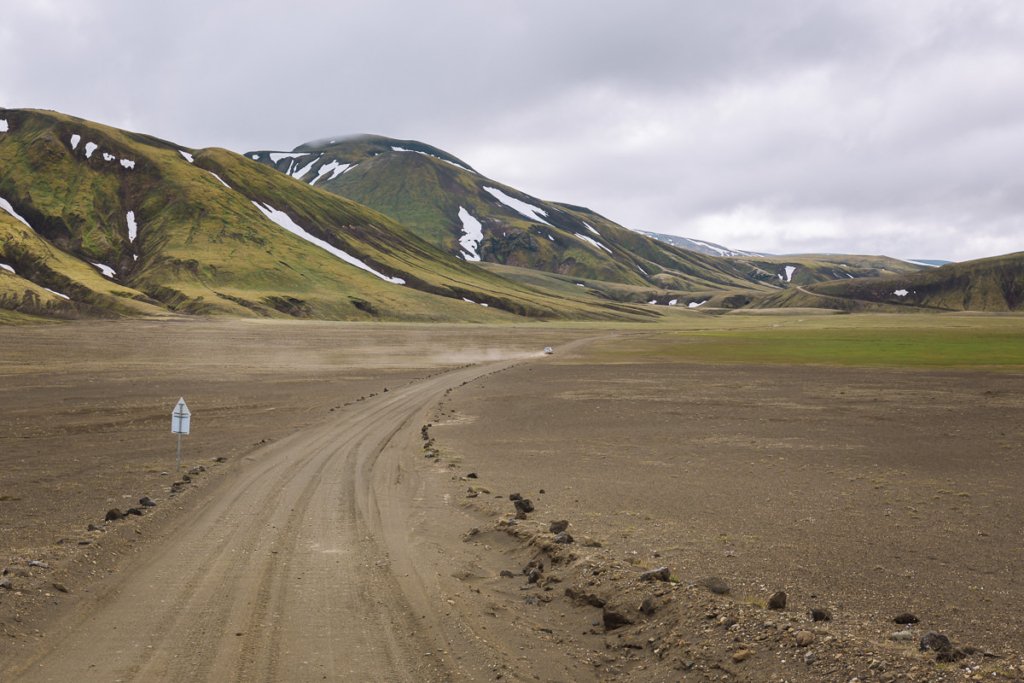
HOW EASY IS DRIVING IN ICELAND?
On the Ring Road and other paved roads, driving in Iceland is very easy. The roads are good quality with clear signs, and generally not very busy. On sunny days, driving on them is a breeze, but weather conditions can change rapidly making the driving more of a challenge.
The F-roads are unpaved and – being in more remote and mountainous locations – provide much more of a challenge. To prepare for driving in the highlands, read our guide to the F-roads of Iceland.
HOW TO PREPARE FOR ICELAND’S DRIVING CONDITIONS
Iceland is just below the Arctic circle so the conditions can be extreme.
The winters are cold and dark and, even in summer, the sun doesn’t get far over the horizon. You can encounter snow and ice any time of year. In winter, the storms can be severe and in summer the driving rain can be endless. Gusts of winds can easily rip a car door off its hinges – something you’re not insured for.
There are some simple things you can do to prepare.
- Check the weather conditions before each journey.
- Keep up to date with the current state of the roads including which ones are open on the Safe Travel website.
- Take food and drink with you and plenty of warm clothing in case something goes wrong and you get stranded.
- Always park facing into the wind and be very careful as you get in and out of the car.
- If bad conditions are likely, leave yourself plenty of time to complete your journey.
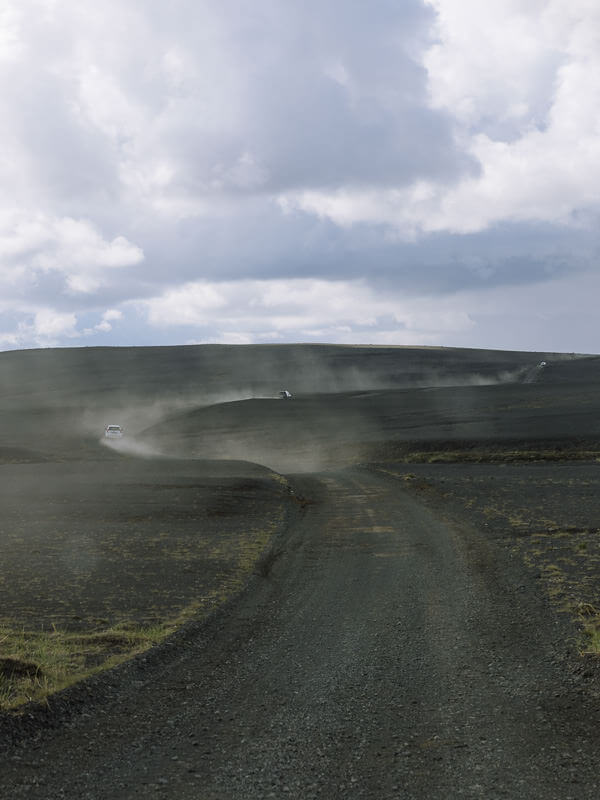

WHAT TYPE OF ICELAND RENTAL CAR DO YOU NEED?
The main factor that will determine the type of car you need to hire is where you want to drive in Iceland. However, other factors such as safety, the time of year you are travelling, comfort, cost and trunk size are important as well.
2-WHEEL DRIVE CAR (2WD)
If you are visiting Iceland in summer and plan to explore the scenery and towns on the Ring Road, then a 2-wheel drive car is all you will need. You may have a few short bumpy journeys connecting to access roads, but nothing will be too difficult.
A 2WD is also fine if you are coming in winter and sticking to the populated areas around Reykjavik where roads are paved and regularly cleared.
4-WHEEL DRIVE (4X4)
If you come to Iceland in winter (November to April) and want to explore outside the populated areas, a 4×4 vehicle is highly recommended. Ice and snow can quickly settle on the access roads, and are not cleared as quickly as in the towns.
You will also need a 4×4 vehicle if you want to drive on the F-roads in the central highlands of Iceland. These roads are only open from around late June to late September. Read more in our guide to driving the F-roads.
CAMPERVAN
Accommodation in Iceland can be expensive and difficult to find so one money-saving option is to hire your own van to sleep in. Prices rise dramatically in the high season but include everything you need for cooking and sleeping in an environment that is much warmer than a tent.
Keep in mind you also need to pay for camping fees each night.
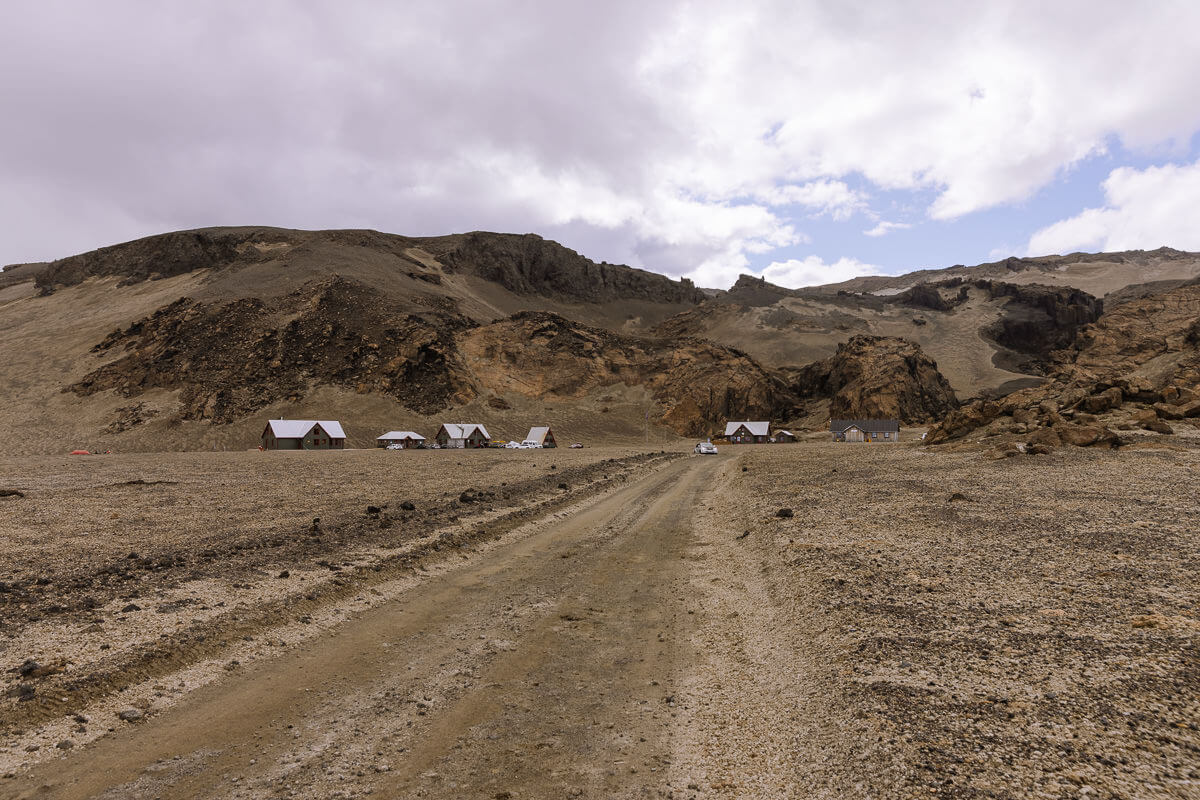
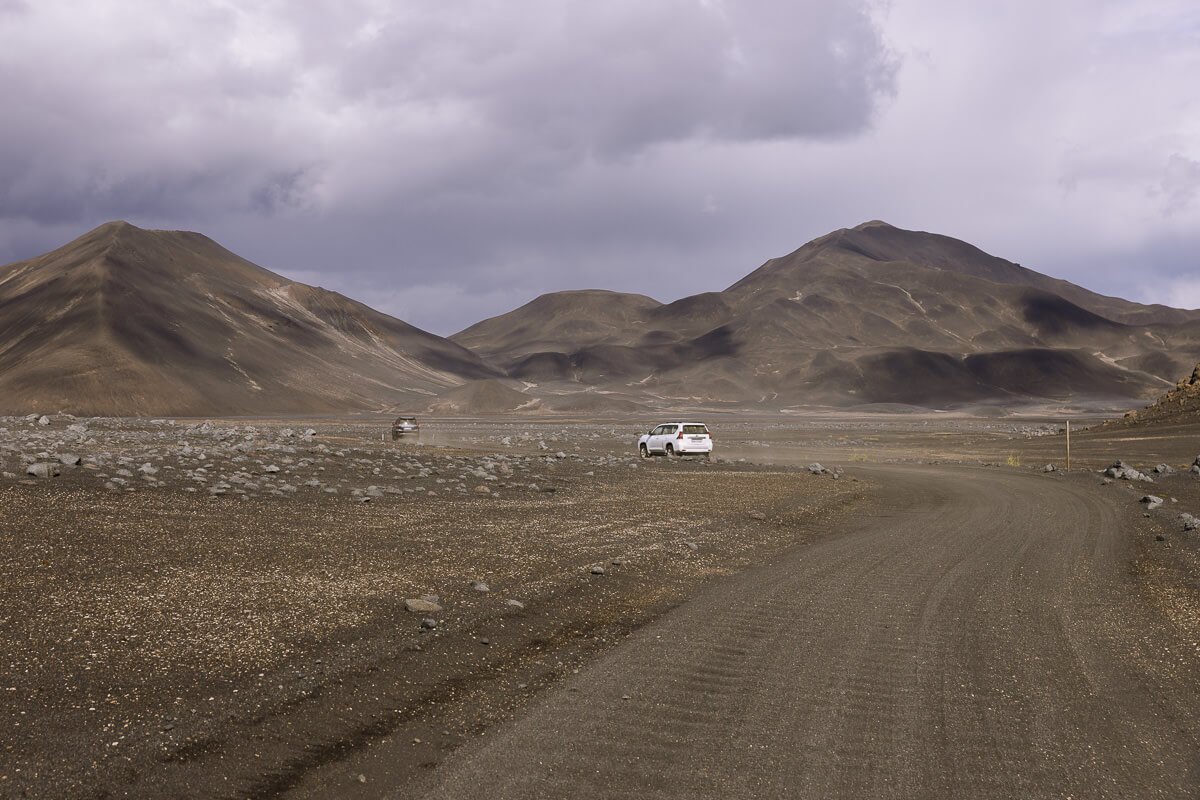
HIRING A RENTAL CAR IN ICELAND
The best place to book a car rental in Iceland is Lotus Car Rental. This is not an affiliate link, and we were not sponsored by Lotus.
After extensive research, we decided they were the best option, especially if you intend to drive on the F-roads. We have more information about why this is important in this guide.
Their rental prices include free pick up and drop off from the airport (5 minutes away), unlimited mileage, free cancellation with no deposit, third-party liability insurance, collision damage waiver, and theft protection.
If you don’t plan on driving on the F-roads, we recommend RentalCars.com who compare prices across all the major car rental companies.
INSURANCE FOR YOUR ICELAND CAR RENTAL
LOTUS CAR RENTAL
Lotus has two levels of additional insurance:
Gold Insurance covers gravel, sand and ash protection which is recommended in Iceland with its unique volcanic environment.
Platinum Insurance covers all the above, plus it covers vehicles on the F-roads including river crossings. Very few car rental companies supply insurance for crossing rivers.
RENTALCARS.COM
If you book your Iceland car rental with rentalcars.com the quoted price includes theft protection and collision damage with an excess of around Kr 350,000 (£2,677 / £2,051 / €2370).
However, you can purchase full protection for Kr 13,800 ($105 / £80 / €93) for the entire trip. This means the company you hire the car from will charge you if anything goes wrong. You then need to claim the excess back from rentalcars.com
INSURANCE4CARHIRE
Another good option is to buy an annual insurance policy from insurance4carhire. They have a policy that covers you for the unique challenges of driving in Iceland. All the details are available on their website.
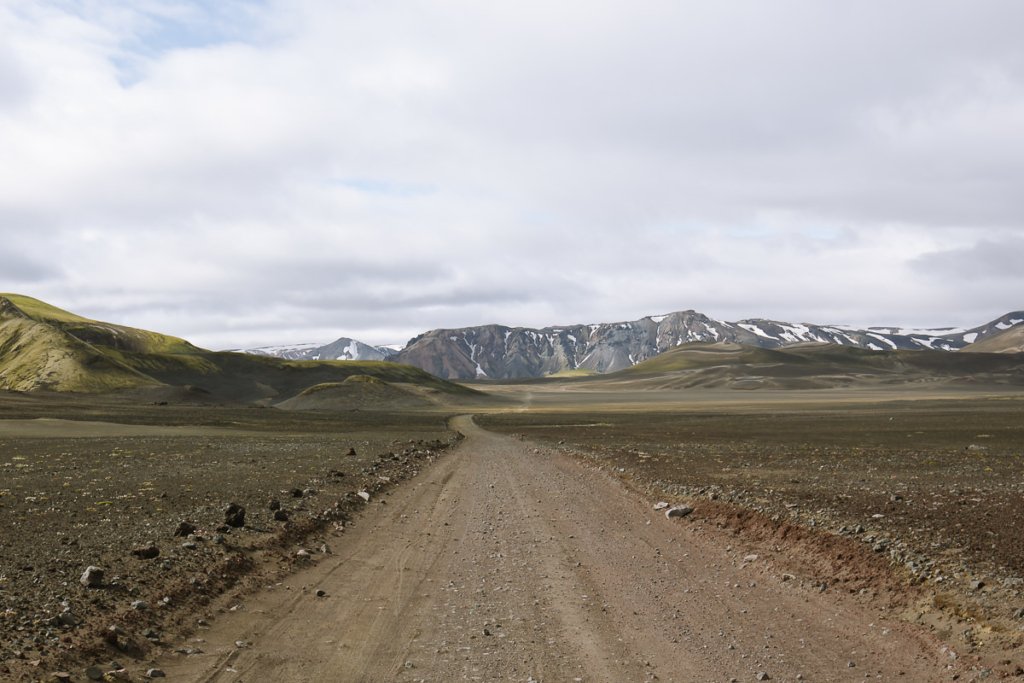
WHAT TYPE OF INSURANCE DO YOU NEED?
Driving in Iceland risks natural hazards: gravel flying into the windscreen, sand and ash destroying the paintwork, strong wind ripping off doors and large boulders damaging the underside of the car.
Like most things, renting a car in Iceland is not cheap. But what really pushes the price up is insurance to cover the unique hazards of Iceland. It’s very important to understand what extras are included in your Iceland car rental, here are some common considerations:
- Some policies do not cover for doors being damaged in strong winds.
- Crossing rivers above a certain depth may not be covered by your policy.
- Some policies exclude sand and ash protection.
- It’s very common for tyres to be excluded completely from insurance policies.
- Damage to headlights, windscreens and the underside of the car is generally not covered.
Make sure you know exactly what’s covered to decide if you need any additional insurance. One thing we don’t recommend is theft insurance. Iceland is a very safe country, so theft protection is unlikely to be needed.
For something more enjoyable to read than the fine print of your hire car contract, try these road trip quotes.
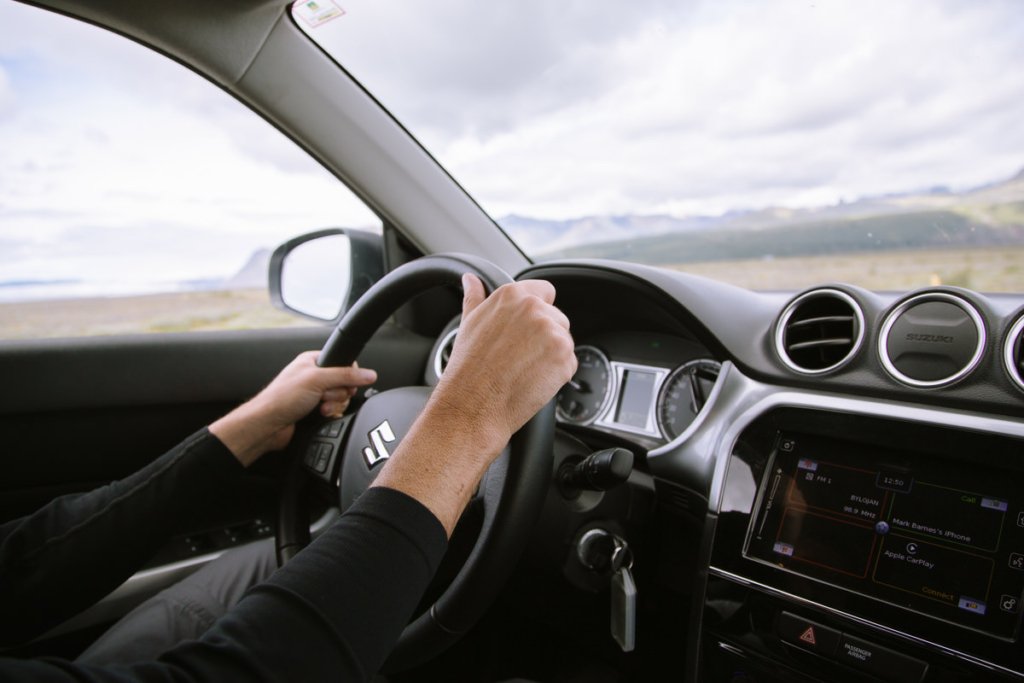
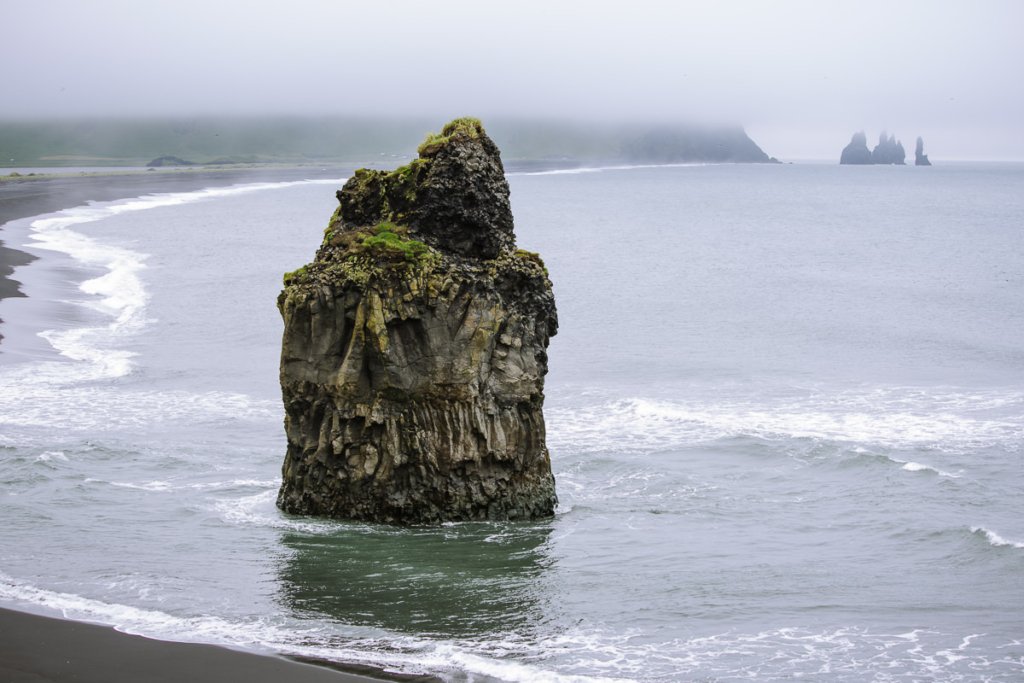
IMPORTANT LAWS TO KEEP IN MIND
Driving in Iceland is a great way to see the country and on the main roads, like the Ring Road, it doesn’t present too much of a challenge. However, there are a few specific laws to be aware of.
IT’S ILLEGAL TO GO OFF-ROAD
Driving off-road is not permitted in Iceland. As a remote wilderness area, very few plants manage to survive, and damage caused to them could take decades to recover. Off-road driving has in the past threatened the Icelandic fauna and locals will not hesitate in reporting anyone driving off-road.
YOU MUST KEEP YOUR HEADLIGHTS ON AT ALL TIMES
Low visibility conditions are common in Iceland including cloud, mist, rain and snow. Additionally, driving on gravel and sandy tracks can throw up great plumes of dust, so it’s a requirement to always keep your headlights on, day and night. If someone flashes you, it will probably be because you have forgotten to turn them on.
THE ROUNDABOUT RULES ARE A BIT DIFFERENT
On 2-lane roundabouts in Iceland, the car in the inner lane has right of way and cars in the outer lane must give way to them. The opposite is true in most other countries, so take care.
SPEED LIMITS IN ICELAND
Iceland is a very safe country, and you won’t see many police. But there are frequent speed cameras; some are signed, some are not. The fine for breaking the speed limit is up to $460USD. Below are the standard speed limits in Iceland, however, always follow the local speed signs.
ICELAND SPEED LIMITS
30-50 km/h
populated areas
80 km/h
gravel tracks
90 km/h
paved roads
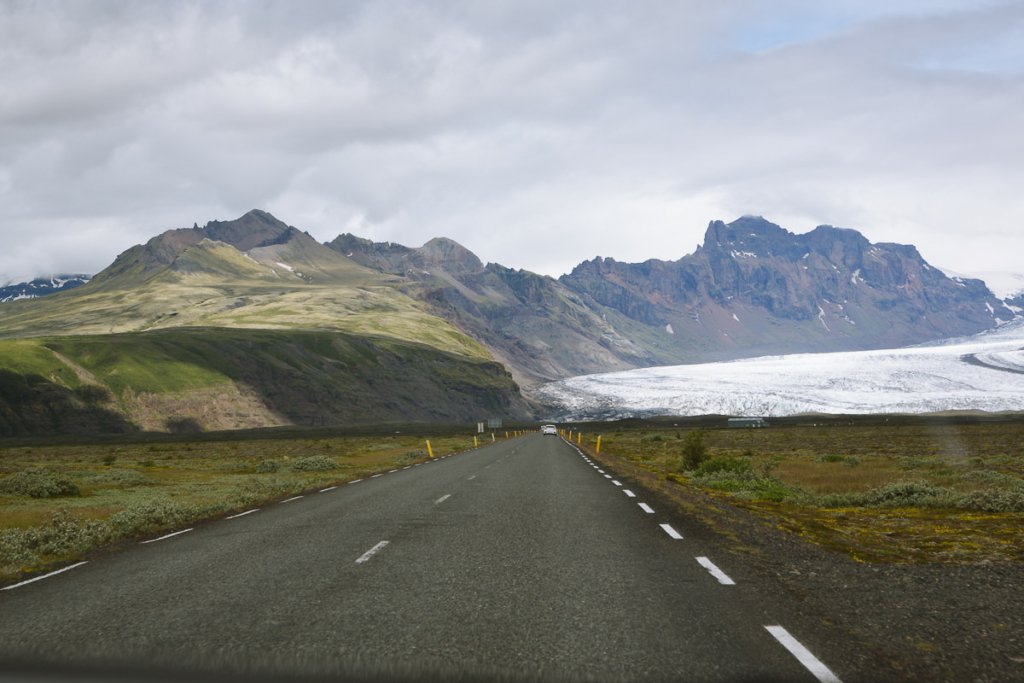
FILLING UP IN ICELAND
There are enough gas stations along the Ring Road and access roads that getting fuel is not something you need to think too much about.
However, once you venture off the main roads, gas stations become considerably scarcer. Fill up when you can to avoid the risk of running out, and on long journeys in remote areas plan where your next stop will be.
In particular, many of the F-roads through the centre of the country have no fuel stations at all. Those that do, are often few and far between. There’s also no guarantee that they will be open. Definitely, fill up before you set off on an F-road, monitor your distances & fuel usage, and plan where you intend to fill up next.
USING THE AUTOMATIC PAYMENT MACHINES AT N1 STATIONS
Lotus Car Rental provide a discount card providing small savings off fuel at N1 stations, of which there are several around Iceland.
All N1 gas stations require you to pay via credit or debit card via the automatic machines located near the pumps Here’s how to use them:
- Select your language from the screen
- Tap the Lotus discount badge where marked on the machine to activate your discount.
- Insert your debit/credit card and enter your pin
- Select the amount of fuel you want in Icelandic Krona. Please note – if you want to fill the tank, hit “FULL TANK.” If you hit a krona amount (say, 5000 krona) and you use less than that amount, it will charge you the full amount then process a refund for the difference in about a week. If you hit FULL TANK it will only charge you what you use.
- Select the pump number you are going to use.
- Remove your card and fill up from the pump you selected on the payment machine.
- After you have filled up, put your credit card back in the payment machine to get a receipt.

HELP SUPPORT OUR BLOG
If you’d like to help keep Anywhere We Roam on the road, here are some ways you can support us.
Follow us on Instagram
Book your trip on our book page
Buy us a coffee

HOW TO NAVIGATE IN ICELAND
There are not that many roads in Iceland so navigation is relatively easy.
Google has extensive coverage of the country but (even if you have purchased data) reception in less populated areas will be patchy. So make sure you download Google Maps offline for the area you intend to explore before setting off.
We also highly recommend Maps.Me. This app also allows you to download maps for the area, but it has better offline functionality, more accurate estimates for journey times than Google maps and often include walking routes.
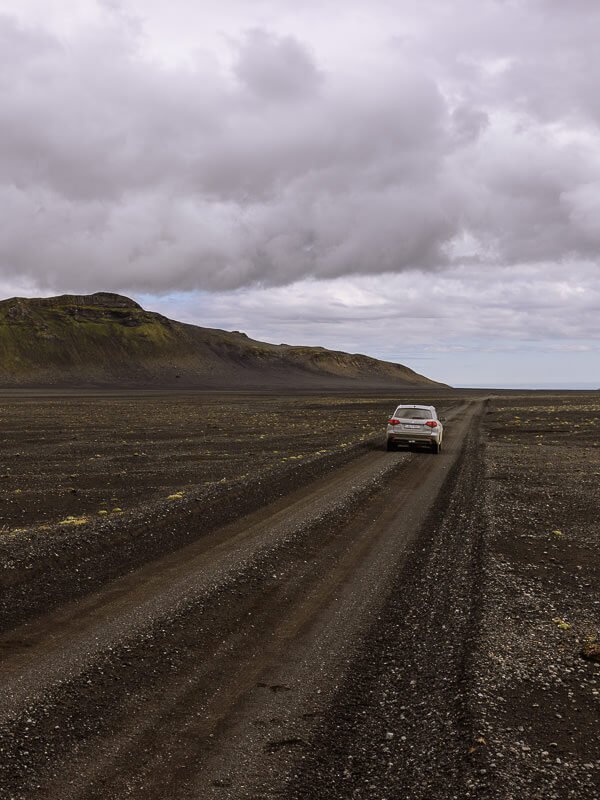
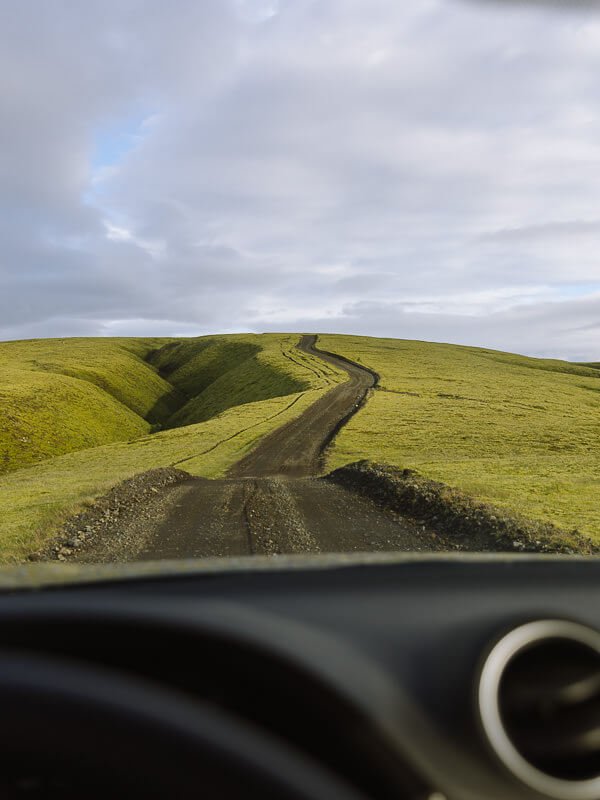
IMPORTANT TIPS FOR DRIVING IN ICELAND
DON’T STOP IN THE MIDDLE OF THE ROAD
Almost all roads in Iceland are only single lane (except for the ring road) with very little space on the side to pull over. You’ll be very tempted to pull over and stop for photos, but there are only limited places where this is possible. Stopping in the road slows down traffic and is a danger to other motorists.
BEWARE OF ANIMALS ON THE ROAD
Iceland has many farms spread all over the country and instead of fencing their livestock in they are free to wander wherever they want. As a result sheep, cows and highland horses can be found meandering all around the country. So keep an eye out for any animals that might be on the road.
KNOW THE BREAKDOWN NUMBERS
The emergency number in Iceland is 112. This number responds to all emergencies including accidents, fire, crime, natural disasters, and search and rescue. It can be reached anywhere in Iceland via voice or text message.
TAKE EXTRA CARE ON THE F-ROADS
There are no facilities and little road traffic on the F-roads, so if something goes wrong you could be on your own for quite a while. Ideally, travel in pairs and download the Safe Travel App to submit a travel plan outlining where you will be each day. The app allows you to communicate with the emergency services, even if you have no phone coverage, so they can find you quickly should anything go wrong.
BOOK YOUR CAR HIRE WELL IN ADVANCE (ESPECIALLY IN SUMMER)
Around 2 million visitors flood into Iceland every year and the vast majority come during the short summer season. So book your car rental well in advance. If you intend the travel in the highlands you’ll need a special car which the rental company may have a limited supply of.
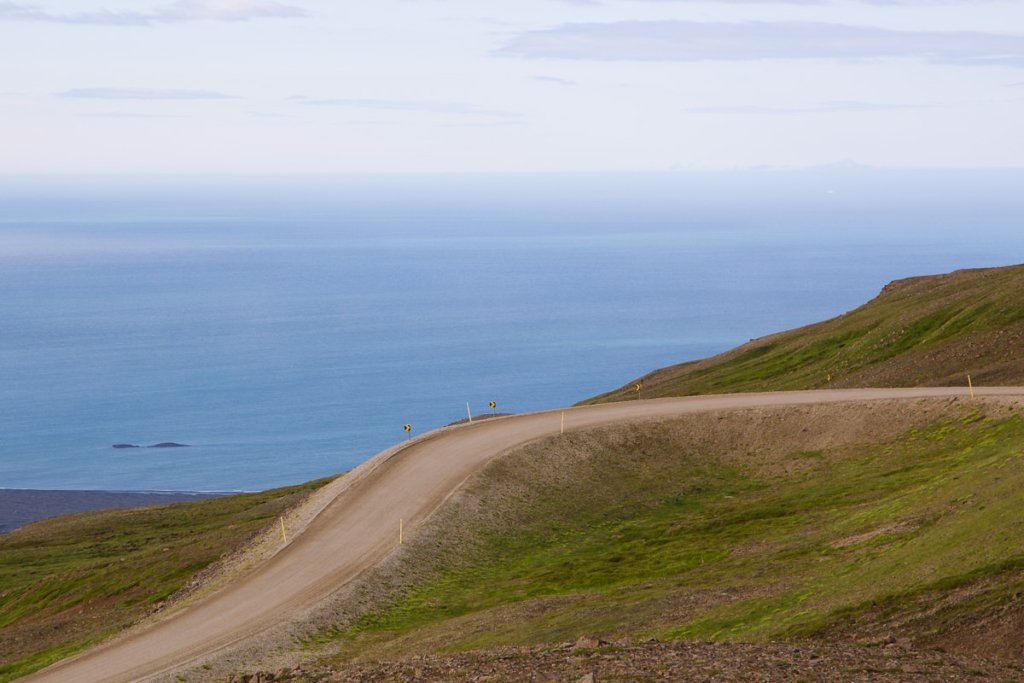
DRIVING IN ICELAND FAQ
WHAT SIDE OF THE ROAD DO YOU DRIVE ON IN ICELAND?
The right-hand side.
DO I NEED AN INTERNATIONAL DRIVING LICENCE IN ICELAND?
No. Valid driving licences with photographs are accepted.
WHAT IS THE SPEED LIMIT IN ICELAND?
50 km/h in built-up areas; 80 km/h on gravel tracks; 90 km/h on paved roads.
WHAT IS THE EMERGENCY NUMBER?
112 – via voice or text message.
PLANNING YOUR ICELAND TRIP
Iceland is an excellent destination for semi-adventurous travellers who like to get off-the-beaten-track and immerse themselves in stunning scenery. Here’s some more reading from us to help plan your journey to the land of fire and ice.
If you found this guide useful, we’d love it if you could follow us on Instagram.
GENERAL TRAVEL TIPS
15 useful tips for visiting Iceland
How to drive on the F-Roads of Iceland
EXPLORING THE HIGHLANDS
How to visit the Iceland Highlands
6 Amazing Landmannalaugar hikes
Instructions for self-driving to Askja
Hiking in Kerlingarfjöll & Hveradalir
STAY IN TOUCH
Stay up to day with our travels on Instagram and get semi-regular updates directly to your inbox via our newsletter.
INSTAGRAM // SUBSCRIBE
SHARE THIS GUIDE
If you found this guide useful, please share it to your social media or pin it to your Pinterest boards.
